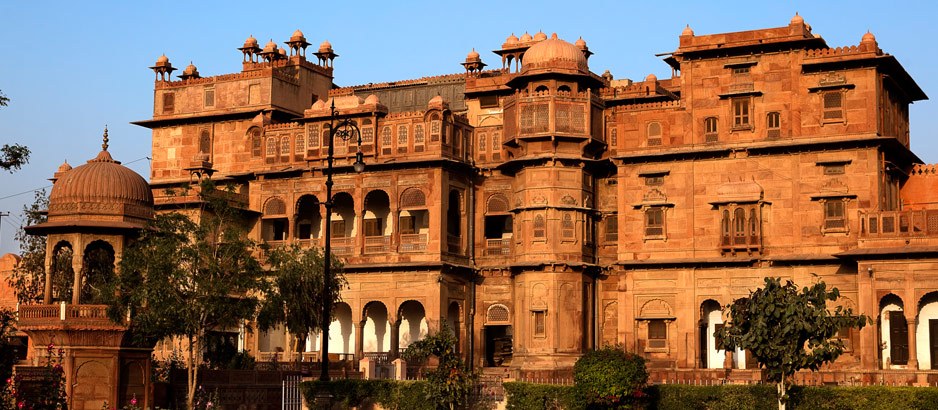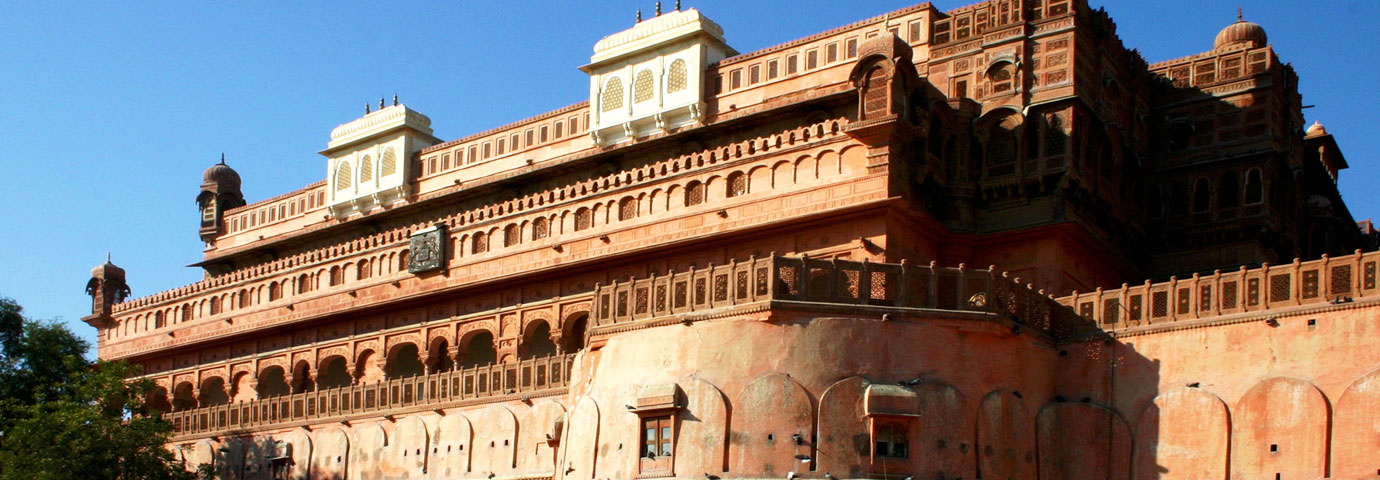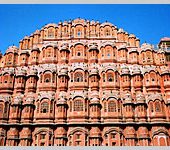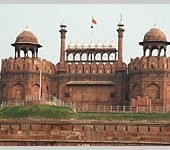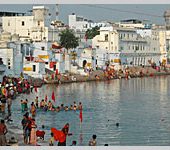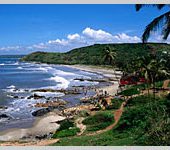Junagarh Fort (Rajasthani: जुनाग्द क़िला) is a fort in the city of Bikaner, Rajasthan, India. The fort was originally called Chintamani and was renamed Junagarh or “Old Fort” in the early 20th century when the ruling family moved to Lalgarh Palace outside the fort limits. It is one of the few major forts in Rajasthan which is not built on a hilltop. The modern city of Bikaner has developed around the fort.
The city celebrates its foundation day on Akshaya Tritiya by flying kites and eating special Rajasthani food that includes Bajre Ka Khichda and Imli ka Paani (Tamarind Water) among other snacks. The celebration lasts for two days, known as Chhoti Akha Teej and Badi Akha Teej. People can be seen flying kites during these two days right from the early morning at 5-6am till late sunset.Formerly the capital of the princely state of Bikaner, the city was founded by Rao Bika in 1486[2][3][4] and from its small origins it has developed into the fourth largest city in Rajasthan. The Ganges Canal, completed in 1928, and the Indira Gandhi Canal, completed in 1987, facilitated its development.
The Junagarh Fort and its temples and palaces are preserved as museums and provide insight into the grandiose living style of the past Maharanas of Rajasthan.
The Karni Mata (करणी माता) Temple or the Rat Temple of Rajasthan is situated around 30 km away from the Bikaner city and is dedicated to Karni Mata, a famous mystic of her times, believed to be an incarnation of goddess Durga. The locals will be quick to point out that the creatures running around in the temple are not rats, they are kaabe (plural, kaaba singular). Kaabe are believed to be reincarnations of humans who had been devotees of Karni mata, and the brevity of human life did not sufficiently satisfy their devotion.
General Information
Area: 155 km2 (60 sq mi)
Altitude: 242 m (794 ft)
Climet: 28–53.5 °C (82.4–128.3 °F).( summer )−4–23.2 °C (24.8–73.8 °F).( winter )
Languges: Hindi, English, Braj Marwari
What To See
- Junagarh Fort
- Jain Temple Bhandasar
- Gajner Lake
- ResearchCentreCamel
- Lalgarh Palace Museum
- The Royal Cenotaphs
- Prachina Museum
- Ganga Singh Museum
- Nature & Wildlife Tours
- Kodamdeshwar Temple
- Bikaner Miniature Arts
- maharaja craft factory
Architecture
Architecture is both the process and the product of planning, designing, and constructing buildings or any other structures.[3] Architectural works, in the material form of buildings, are often perceived as cultural symbols and as works of art. Historical civilizations are often identified with their surviving architectural achievements.
Prior to the mid 15th century, the region that is now Bikaner was a barren wilderness called Jangladesh.[5] Rao Bika established the city of Bikaner in 1488. He was the first son of Maharaja Rao Jodha of the Rathore clan, the founder of Jodhpur and conquered the largely arid country in the north of Rajasthan. As the first son of Jodha he wanted to have his own kingdom, not inheriting Jodhpur from his father or the title of Maharaja. He therefore decided to build his own kingdom in what is now the state of Bikaner in the area of Jangladesh. Though it was in the Thar Desert, Bikaner was considered an oasis on the trade route between Central Asia and the Gujarat coast as it had adequate spring water. Bika’s name was attached to the city he built and to the state of Bikaner (“the settlement of Bika”) that he established. Bika built a fort in 1478, which is now in ruins, and a hundred years later a new fort was built about 1.5 km from the city centre, known as the Junagarh Fort.[6][7][8]

